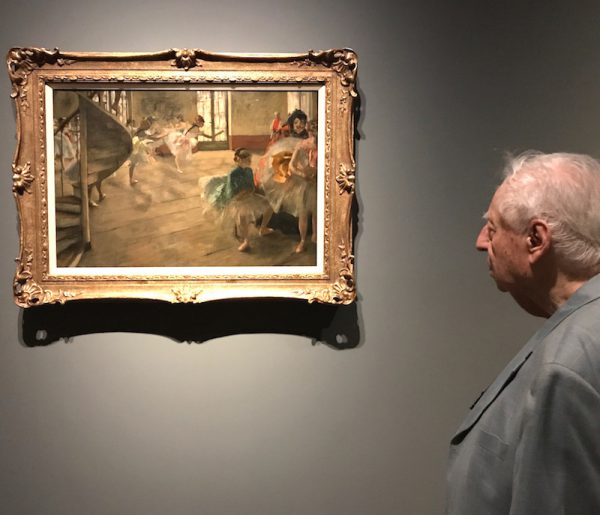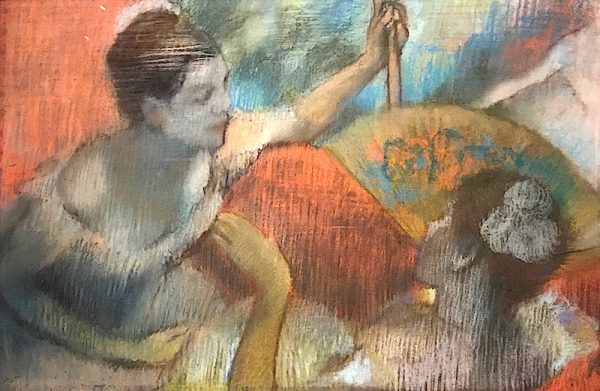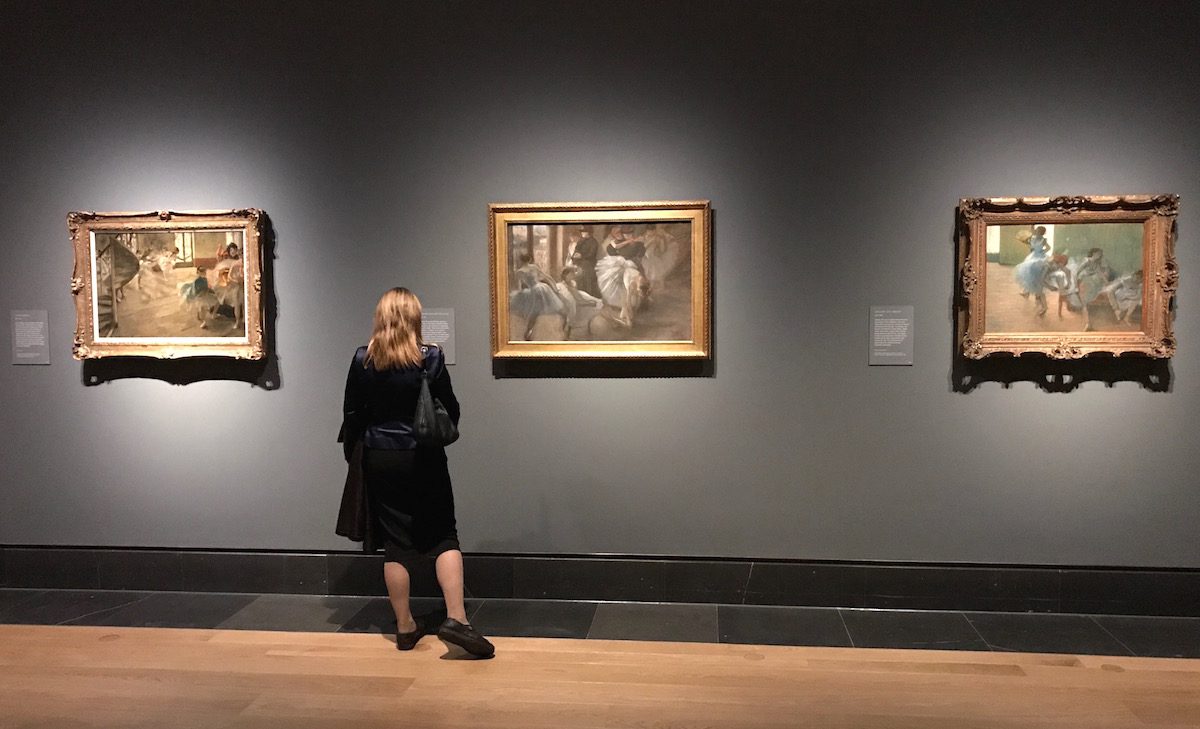Degas often seems like the odd man out, among the leading artists of the Impressionist Movement. The National Gallery’s exhibition of his work, drawn from the holdings of the Burrell Collection in Glasgow, while the Burrell’s building is being renovated, proves the point, to the hilt.
The fascination of the exhibition is, in fact, that it offers a lesson, or a series of lessons, in the processes of seeing – ELS
Both in political attitudes and in his purely technical approach, Degas differed widely from the other members of the Impressionist group. Posterity has been inclined to forget that in politics Degas was anti-Dreyfusard, which means in fact that he was not only conservative, in contrast to the other artists prominent in the group, but also, by implication at least, anti-Semitic. Degas believed in the guilt of Alfred Dreyfus, an army officer of Jewish descent, unjustly convicted of communicating French military secrets to the German Embassy in Paris. Dreyfus spent nearly five years imprisoned on Devil’s Island in French Guyana before an immense public outcry brought about his release. One of Dreyfus’ chief champions was Emile Zola, most effectively through his blazingly indignant tract J’Accuse, published in the newspaper L’Aurore, in January 1898. In earlier years, Zola was also an effective champion of the art of the Impressionists.

Impressionism, in art historical terms, is associated with the idea of pleinair-ism, that is, with the idea of painting away from the seclusion of the studio, out in the open air. As the show now at the N.G. demonstrates this was of little interest to Degas, though he did occasionally paint landscapes. In the material borrowed from the Burrell, landscapes are pretty much absent, though there is a masterly composition showing racehorses and jockeys in the rain, and also a sketch of an extremely reluctant single horse, tied to a tree.
Some of the most striking works are to do with the dance – that is to say with the company of ballet dancers at the opera house in Paris, with a couple of sketches of Ukrainian folk dancers thrown in.
The dancers Degas painted belonged to an epoch considerably before the early 20th-century triumph of Diaghilev’s Ballets Russes in Paris, and he was not in any case much interested in performances on the stage. What fascinated him far more was what happened behind the scenes – dancers waiting to perform, dancers practising in class, dancers relaxing. One image shows a dancer ruefully examining what one guesses to be an injured foot. Many of the more elaborate images make use of a kind of cut-and-paste technique familiar from the old masters (and seen again, as it happens in the work of Jasper Johns, which can currently be seen just up the road in the galleries of the Royal Academy). An image recurs in an intricate figurative composition, and one realizes that the two images have the same source – the second version has been cut out and flipped from right to left. This is something deliberately composed, not something recorded as it actually was.

This aspect is at first concealed by the fact that so many of the images seem to have been left unfinished – an impression reinforced by the fact that so many are in pastel, a medium associated with sketchiness, rather than being paintings in oil.
The fascination of the exhibition is, in fact, that it offers a lesson, or a series of lessons, in the processes of seeing. Degas is immune to the supposed glamour of the ballet. There is no shift in attitude when, instead of or portraying dancers, he chooses to depict a laundrywoman, shouting out a list to her colleagues.
In fact, Degas – politically alt-right, technically experimental only in a way that does not depart from the tradition handed down to him by Neo-classical masters such as Ingres – is indeed radical in other respects. What he actually shows one, much of the time is a world where his subjects are at work. This description applies as accurately to his young dancers as it does to his laundrywomen. They are off-guard, unconscious of being watched, preoccupied with the demands of the job, or snatching a few moments of relaxation away from it.
Words: Edward Lucie-Smith Photos: Sara Faith © Artlyst 2017
Edgar Degas Drawn in Colour 20 September 2017- 7 May 2018 National Gallery Admission Free Visit Here

